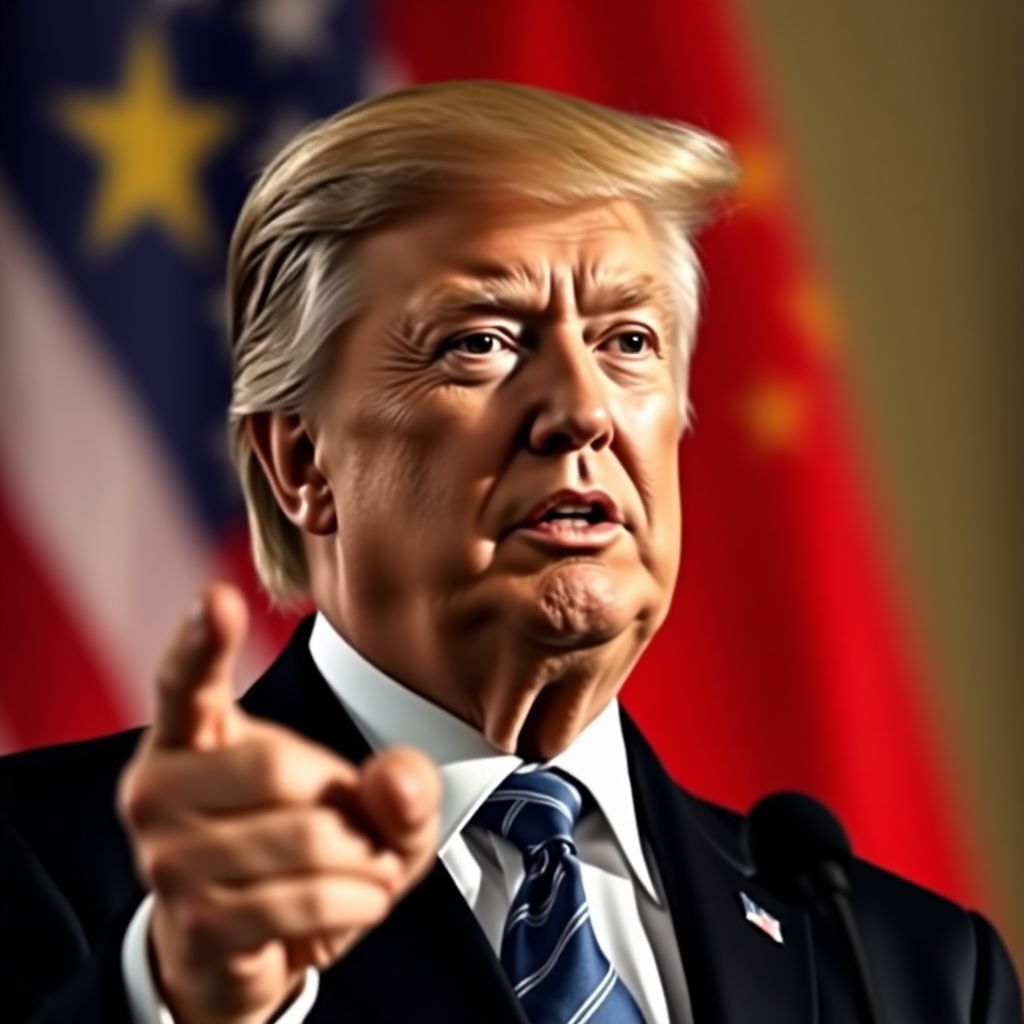Former U.S. President Donald Trump has raised concerns over China’s accelerating involvement in the cryptocurrency sector, urging the United States to take decisive action to maintain its leadership in the global digital asset space. In a recent televised interview, Trump highlighted the growing investments and strategic positioning of China in crypto, stating that the U.S. must remain the dominant force in this rapidly evolving financial frontier.
Trump’s remarks underscored the geopolitical dimension of cryptocurrency adoption, framing the issue not just as a matter of economic interest, but also of national security and technological supremacy. “China is going all in on crypto,” Trump said, emphasizing that the U.S. cannot afford to lag behind in such a pivotal area of innovation.
Estimates suggest that the United States holds approximately 198,012 Bitcoins, valued at over $21 billion, while China is believed to possess around 194,000 Bitcoins, worth close to $20.9 billion. Although these figures are based on blockchain analytics and public data, experts caution that true national holdings are difficult to determine due to the involvement of private investors and undisclosed entities. On-chain data provides only a partial view, leaving room for significant uncertainty in these numbers.
The competition between the U.S. and China in the crypto space is not limited to asset ownership. Chinese manufacturers, including industry heavyweights like Bitmain, Canaan, and MicroBT, continue to dominate the global cryptocurrency mining hardware supply chain. While many of these companies have begun establishing manufacturing facilities outside of China — including in the United States — to avoid trade restrictions and meet rising demand, their influence over critical infrastructure remains substantial.
This strategic positioning has implications beyond mere ownership of digital assets. Control over mining hardware and infrastructure can shape the entire ecosystem, from transaction processing to network security. As such, Trump’s warning touches on a broader concern: the need for the U.S. to not only lead in crypto adoption but also to secure its role in the foundational technologies that support it.
In Washington, regulatory uncertainty continues to fuel market volatility. Discussions about potential restrictions, taxation policies, and the legal status of various digital assets have had a measurable impact on investor sentiment. Political statements — especially from high-profile figures like Trump — often trigger sharp price movements and influence the strategic decisions of crypto firms and developers.
The former president also voiced concerns about the impact of overregulation. He warned that excessive domestic restrictions could drive innovation and economic opportunity to more favorable jurisdictions, ultimately costing the U.S. its competitive edge. This argument is echoed by many in the cryptocurrency industry, who advocate for a balanced approach that fosters innovation while ensuring consumer protection and financial stability.
Cryptocurrency analysts point out that measuring national crypto holdings is inherently complex. Much of the data relies on the identification of wallet addresses associated with known institutions, such as exchanges or regulated custodians. However, many digital assets are held in private wallets or by trusts that maintain a high level of anonymity. This opacity makes it difficult to draw definitive conclusions about which nation holds the upper hand in crypto reserves.
Moreover, the growing presence of decentralized finance (DeFi) platforms and cross-border crypto transactions further blurs the lines of national ownership. As blockchain technology enables borderless financial activity, traditional metrics of economic power are being redefined.
In response to these challenges, some U.S. lawmakers and policy experts have begun calling for a comprehensive national strategy on digital assets. Such a strategy would involve not only regulatory clarity but also public-private partnerships to support blockchain innovation, workforce development, and cybersecurity measures related to crypto infrastructure.
The U.S. government’s recent moves — such as the consideration of a digital dollar, increased oversight of stablecoins, and engagement with international partners on crypto regulation — indicate a growing recognition of the importance of digital assets in global finance. However, critics argue that more urgency is needed if the U.S. hopes to maintain its leadership position.
China, meanwhile, has taken a mixed approach. While it has banned crypto trading for individuals and cracked down on mining operations domestically, it continues to explore blockchain adoption across various sectors and has made significant progress in developing its central bank digital currency (CBDC), the digital yuan. This dual strategy allows China to control internal financial risks while positioning itself as a global player in blockchain technology.
The geopolitical race for digital currency dominance is likely to intensify in the coming years. As nations invest in blockchain infrastructure, digital payment systems, and regulatory frameworks, the outcome may shape the future of money and redefine the balance of economic power.
To remain competitive, the U.S. must consider not only the volume of cryptocurrency it holds but also its approach to innovation, regulation, and international cooperation. Strategic investments in blockchain education, R&D, and secure infrastructure will be critical to maintaining leadership.
As the digital asset landscape continues to evolve, the stakes are high. Whether through private sector innovation or public policy, the U.S. faces a critical moment in determining its role in the next generation of global finance — and Trump’s warning is a reminder that the window for action may be narrowing.

